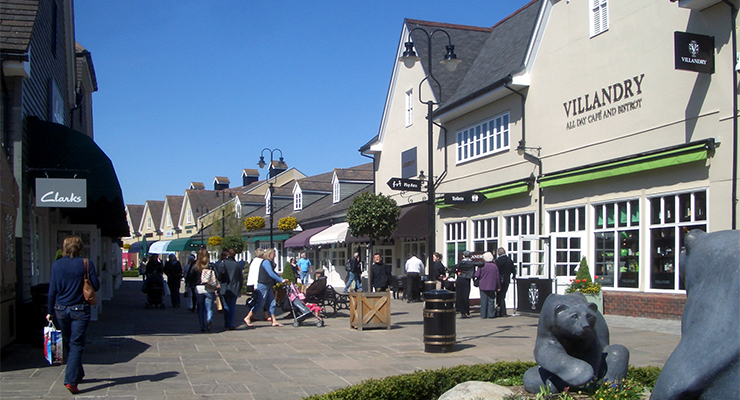For investors, the traditional fixed rent leasing model at shopping center assets has historically brought certainty to rental income. The economically sustainable market value of locations is priced into lettings and adjusted on the basis of the rents achieved at comparable stores. This has enabled shopping centers to adapt to suit their particular markets, but has focused lettings on those occupiers who can afford to pay higher rents rather than those with the strongest alignment to consumers.
This has inevitably led to standardization of the retail mix and brands present. Add to this a certain “functional uniformity” in design and focus underfunded marketing budgets on driving footfall rather than shopper engagement and it becomes very easy for consumers to feel disenfranchised and critical of aspects such as uniqueness, relevance, and excitement.
Throughout my career, real estate development has constantly relocated and diluted expenditure, in response to changing consumer preferences. However, digitalization has greatly increased the pace of change and COVID-19 has proven that, if absolutely necessary, consumers can fulfill their essential needs at alternatives to shopping centers. It is clear that the value of shopping center locations is now being substantially reduced, and change now occurs at a faster pace than lease lengths or review cycles. Store closures and retail business failures are again making the news, and as rental income is no longer certain, investment has fled from shopping centers to other assets.
A Bright Future Is Possible
Despite this gloom, there can still be a bright future for shopping centers. The vast majority of expenditure still takes place in town centers, as much as 25% of potential turnover at most shopping centers is lost due to retail mix deficiencies, and consumer dissatisfaction has as much to do with inadequate management as it has to do with the allure of digital shopping. However, there needs to be a seismic shift in the way shopping centers are managed and a focus on the fundamental principle that it is the individual customer transaction that ultimately generates rental income. It is, consequently, in the interest of investors that management seeks to reward, delight, and meet the expectations of customers rather than take them for granted.
To illustrate this point, it is worth reviewing the management approach at designer outlet centers, which have thrived over the last 40 years. Starting out as no-frills, clearance centers in the 1980s, outlet centers have evolved into sophisticated, vibrant, and highly profitable destinations. Sales at European outlet centers have doubled from €10.7 billion in 2013 to €21.3 billion in 2023. This is nominal compound growth of 7.1% pa which, after inflation, is 53% greater than the rate of non-food retail turnover growth (which includes online sales) in the European Union.
Outlet center assets are priced on the explicit value of their operational activity, rather than the perceived market value of a shopping center’s location. Income is derived through turnover leases and the resulting relationship between investors, management, and brands is considered to be collaborative rather than competitive. Trading performance (sales density, spend per visit, and year on year growth) is the key measure of success, requiring a more intensive approach than typically found in traditional shopping center management. Decision making is backed by superior insight across larger, more specialized teams, and essential skills, such as leasing and marketing, are retained in-house for maximum effectiveness.

Capitalizing on the Value of Physical Locations
While the outlet management approach may sound very different (and potentially expensive for shopping center investors), both asset types derive their incomes by capitalizing on the specific value of their physical locations. This means that there is a lot in common when it comes to consumer engagement, leasing, maintenance, rent collection, servicing, or security activities. However, there are significant cultural differences when it comes to driving business and the partnership with brands, which arguably underpin the success of outlet centers.
For example, relatively short leases, flexible design, and determination to grow performance has created an agility that has allowed outlet centers to adapt to changing consumer and brand needs. Forty-three percent of the brands present at European outlet centers in 2023 were not in operation in 2018, while 42% of the brands present in 2018 have exited the format. While this degree of change might alarm traditional shopping center investors, every empty shop, whether by design or by accident, is seen by outlet center management as an opportunity for outlet centers to improve the offer and grow income.
To encourage positive management, outlet operators are also incentivized by contracts that are linked to performance. Regular reporting of turnover encourages operators to actively seek to improve underperforming brands, but where this fails, lease break clauses allow carefully considered replacements to be recruited. This approach not only grows turnover, but leaves the brand mix at outlet centers more closely aligned with the needs of guests.
Brands generally have a very different approach to outlet centers. While more profitable than full price, brands must maintain a balance between their outlet and full-price estates in order to ensure sufficient stock for outlets and to prevent the degradation of full-price values. This naturally limits outlet proliferation and ensures that brands focus on securing the best-performing outlet locations. It also means that outlet operators cannot simply “buy” leading brands. Securing their presence requires an appropriate environment, suitable adjacencies, the right mix of guests, comparable sales densities, and a strong business case. Understanding brands and their performance is, therefore, critically important when it comes to delivering growth.
Sceptics might suggest that discounted prices are the key reason for the success of outlet centers. However, outlet brands are available at alternative physical and digital locations, often at lower prices. For savvy guests, value is also much more than just price. While it is easy to give a long list of experience benefits at outlet centers, it can be argued that most can also be found at shopping centers. Ultimately, guests visit outlet centers because they can find a good selection of their favorite brands, in beautifully crafted surroundings.
It has been a very long time since shopping activity was simply directed to the nearest town, department store, or even outlet center. Yet, we increasingly find similar offers at many of our shopping centers. A lack of diversity is unlikely to lead to a positive choice of destination, so the opportunity to improve rental sustainability can only truly be realized through diversification and improvements in retail mix.
Opportunity for improvement
The important lessons to be learned from outlet centers are that vacancies are always opportunities for improvement; sales density is the critical performance benchmark (not footfall); maintaining a clear point of difference is fundamental to patronage; and insight (of sale densities, catchments, guests, and brands) is essential input for good management. Above all, an appropriate brand mix is essential for optimum performance, and the reward for facilitating the perfect pairing between consumers and their ideal brands is rental growth.
As a consultant, I have been delivering this message to shopping center and outlet center owners for 30 years. However, only the outlet industry has truly embraced an entrepreneurial approach to the management of its assets.

Ken Gunn
Ken Gunn is Managing Director of Ken Gunn Consulting.






